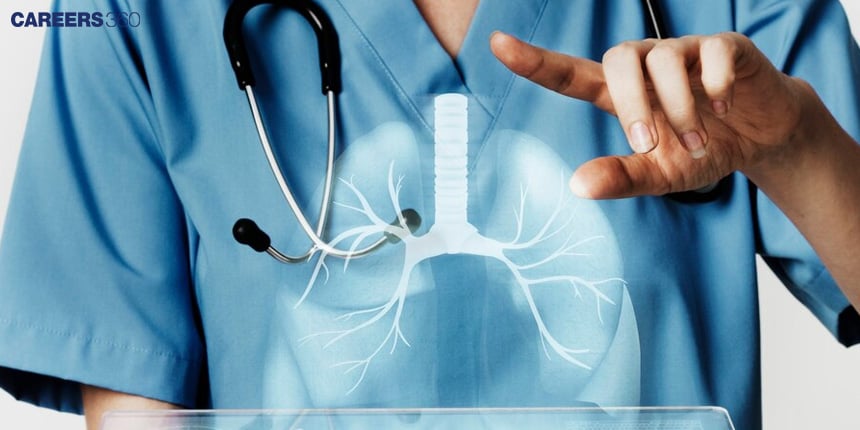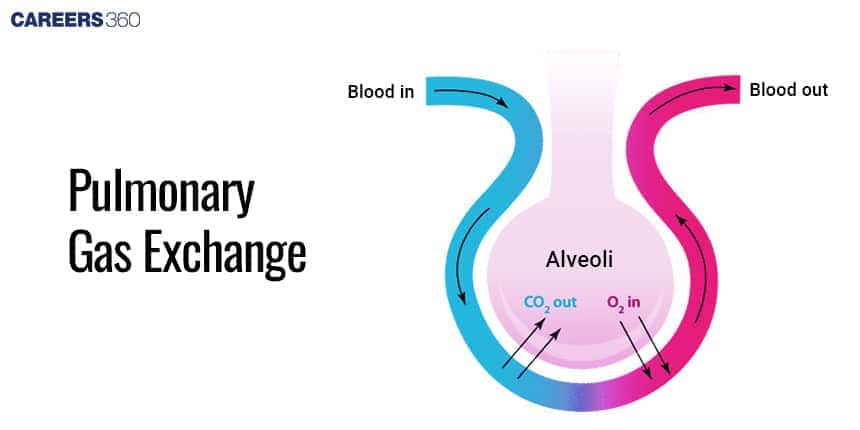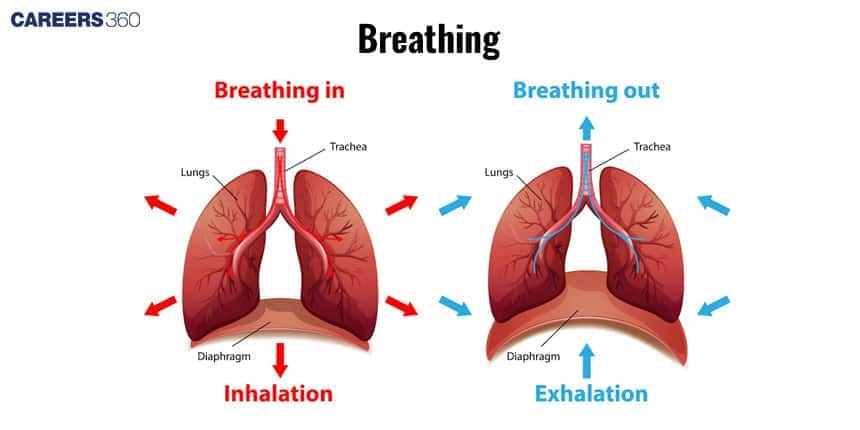Respiration: Transport Of Oxygen And Carbon Dioxide
Transport of respiratory gases, oxygen, and carbon dioxide, is a very important process that maintains cellular function and overall homeostasis. In biology, respiration is the exchange and utilization of gases for the production of energy through cellular respiration. The transport of oxygen and carbon dioxide is quite efficient because it involves mechanisms of alveoli, capillaries, and blood circulation. These processes are controlled by the brainstem, chemoreceptors, and physiological adjustments to ensure optimal gas transport. This is important in the topics of transport of gases chapter of Biology.
NEET 2025: Mock Test Series | Syllabus | High Scoring Topics | PYQs
NEET Important PYQ's Subject wise: Physics | Chemistry | Biology
New: Meet Careers360 B.Tech/NEET Experts in your City | Book your Seat now
- What is Respiration?
- Anatomy of the Respiratory System
- Mechanisms of Breathing
- Processes of Inhalation and Exhalation
- Transport of Oxygen During Respiration
- Transportation of Carbon Dioxide during Respiration
- Structure and Function of Alveoli
- Control of Breathing

What is Respiration?
Respiration is the process through which living organisms use food to produce energy biologically. It is the means of transporting respiratory gases-oxygen and carbon dioxide-between the organism and the environment through a two-way exchange. It is significant for sustaining life as the cells receive oxygen for their functions and remove the metabolic by-product, carbon dioxide, from the body.
Oxygen and carbon dioxide transport occur through a coordinated system involving the nose, pharynx, larynx, trachea, bronchi, and lungs. This respiratory system allows for efficient gas transport to enable the intake of oxygen and the removal of carbon dioxide for the maintenance of cellular and physiological functions.
Also Read:
Anatomy of the Respiratory System
The respiratory system is responsible for the transport of respiratory gases, including oxygen and carbon dioxide. It consists of the upper and lower respiratory tracts. The upper respiratory tract includes the nose and pharynx, while the lower respiratory tract comprises the larynx, trachea, bronchi, and lungs. Gas exchange, an essential part of the transport of gases, occurs within the alveoli, the small air sacs in the lungs.
Mechanisms of Breathing
Respiration in biology refers to the exchange and transport of oxygen and carbon dioxide between the atmosphere and the body. Breathing, an integral part of gas transport, involves inspiration and expiration. During inhalation, oxygen is transported to the lungs, while during exhalation, carbon dioxide is expelled. This process is facilitated by pressure changes in the thoracic cavity caused by the contractions of the diaphragm and intercostal muscles, ensuring efficient transport of oxygen and carbon dioxide.
Processes of Inhalation and Exhalation
In the transport of respiratory gases, inhalation takes place when the diaphragm contracts, increasing the volume of the thoracic cavity and allowing air to rush into the lungs. The exhalation process takes place when the diaphragm relaxes, reducing the volume of the thoracic cavity and forcing air out of the lungs.
Transport of Oxygen During Respiration
Respiration deals with the transport of gases, such as oxygen and carbon dioxide. Oxygen is carried from the lungs to tissues by the bloodstream, whereas carbon dioxide, the waste product, is carried back to the lungs for excretion.
Role of Haemoglobin in Oxygen Transport
Haemoglobin, the most important protein of red blood cells, enables oxygen transport. In the lungs, haemoglobin combines with oxygen to form oxyhemoglobin. This complex circulates in the bloodstream and gives up oxygen in tissues where its partial pressure is low.
Oxyhemoglobin Dissociation Curve
The oxyhemoglobin dissociation curve is the relation that exists between oxygen saturation and partial pressure of oxygen it shows how haemoglobin binds and releases oxygen under various conditions of physiological importance for a means of effective gas transport.
Transportation of Carbon Dioxide during Respiration
Carbon dioxide is a metabolic waste that is transported from tissues to the lungs for exhalation through the following three major mechanisms: dissolved in plasma, as bicarbonate ions, and bound with haemoglobin.
Forms of Carbon Dioxide Transported
Dissolved in Plasma: A small amount of carbon dioxide dissolves directly in the blood plasma.
Bicarbonate Ions: With the aid of carbonic anhydrase, most carbon dioxide is changed to bicarbonate ions.
Carbamino Hemoglobin: Carbon dioxide combines with haemoglobin to form carbaminohemoglobin.
Gas Exchange in the Lungs

Structure and Function of Alveoli
The alveoli are tiny, balloon-like structures that have very thin walls and enable the transport of oxygen and carbon dioxide. These alveoli lie adjacent to capillaries so that these gases exchange readily by diffusion across the membrane.
Control of Breathing
The medulla oblongata and pons control breathing in the brainstem through the monitoring of oxygen and carbon dioxide levels. This adjusts the depth and rate of respiration to ensure efficient gas transport.
Role of Chemoreceptors
Chemoreceptors in the carotid and aortic bodies monitor changes in the amount of oxygen and carbon dioxide in the blood. Chemoreceptors send signals to the brain, which modulates respiration to ensure that there is efficient gas transport.
Cellular Respiration
Cellular respiration is the biological process through which cells obtain energy. During this process, glucose is broken down, producing carbon dioxide, water, and ATP, thereby supporting the body's metabolic needs.
Also Read
Recommended video for Respiration
Frequently Asked Questions (FAQs)
The binding of haemoglobin occurs in the lungs, while the handing over to tissues takes place where the concentration of oxygen is low.
Carbon dioxide travels dissolved in plasma, as bicarbonate ions. It is also bound to haemoglobin.
Among others are partial pressure of oxygen, pH levels, carbon dioxide concentration, and temperature.
During inspiration a diaphragm contracts and increases the thoracic cavity and relaxes on exhalation to breathe.
Also Read
29 Nov'24 11:00 PM
27 Nov'24 01:11 PM
26 Nov'24 11:17 AM
26 Nov'24 10:17 AM
25 Nov'24 07:51 PM
25 Nov'24 07:19 PM
25 Nov'24 11:48 AM
18 Sep'24 06:39 PM
18 Sep'24 06:35 PM
18 Sep'24 04:11 PM


